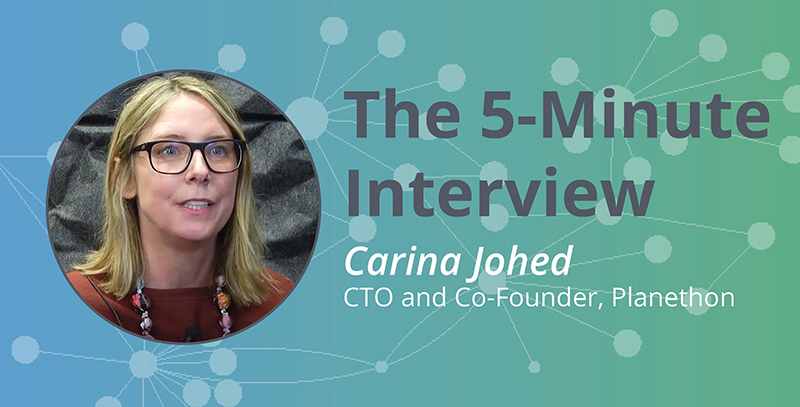Many breakthroughs in sustainability are locked away in scientific journal articles. Business developers want to put sustainability research into action, but lack a way to quickly find the right research and people to support their efforts. Using graph data science to analyze more than a million journal articles in a graph database like Neo4j offers a scalable approach that links science and business development.
In this week’s five-minute interview (conducted at GraphTour NYC 2019), we speak with Carina Johed, CTO and co-founder of Planethon, about her company’s efforts to bridge social ecological sustainability with the business world.
What is Planethon?
We work with social ecological sustainability. We want to create a bridge between the latest science in that area and the business world. Our goal is to link what needs to be done with the people trying to solve the problems and vice versa, both in terms of what problems are out there and in terms of business development. And we reach back to the scientific community to have them further investigate the needs they have.
How are people solving these problems without Planethon?
Everyone wants to invest sustainably or develop sustainably, so everyone is trying to solve a problem themselves and they use the scientific community on an individual level. They invite a scientist and they do research with them. But that’s not scalable since the scientific community really needs to focus on science.
Why is this problem so hard to solve?
If you look at the way scientific research is published, journal articles have been structured the same way for 100 years or more. You have a title, an abstract, an author, and the full text; everything is structured the same way as it has always been. The difference now is they’re uploaded to a scientific publication or a journal but you still have to read the entire article.
Business developers who want to launch new sustainability products need to go through about 1.4 million journal articles to understand what they need to do. That doesn’t work. And of course they can ask a scientist and get a synthesized version of the research, but we try to bridge that gap and scale the scientists, if you will.
How is Neo4j helping you solve these problems?
Part of our business is a consultancy and we work on the manual part of the research to connect scientists and business developers. We also work a lot with training different types of business developers and the management group in how to do this research.
But what we realized quite early is that that approach is not scalable either. We cannot be out helping a lot of people at the same time because there are constraints in the consultancy business.
That’s where we started, and then we realized that we needed to scale this and that’s where Neo4j came in.
So we used the graph to load the data and used that to better predict and help these companies develop their businesses.
What’s next for Planethon?
We’ve been working with the graph itself for a year and a half now. We have started working with graph algorithms. We did a sprint with Neo4j last year to get started with algorithms and that’s where we’re heading.
We need to understand and do research on the scientific team but then also add the data analysis and use graph algorithms even more to enhance and find the hidden information within the publications. So we’re still using graph algorithms and super excited to use Neo4j because it’s really powerful.
Do you have any advice for people starting out in graphs?
Just go ahead and do it. I think Neo4j has several good sandbox environments and good training on Cypher for developers and people with a relational database background. But it’s super, super easy to understand and learn Cypher. So just do it; hop on a sandbox and just get started because you’re gonna learn while you do it.
Want to share about your Neo4j project in a future 5-Minute Interview? Drop us a line at content@neo4j.com
Learn about the power of graph algorithms in the O’Reilly book,
Graph Algorithms: Practical Examples in Apache Spark and Neo4j by the authors of this article. Click below to get your free ebook copy.
Get the O’Reilly Ebook




